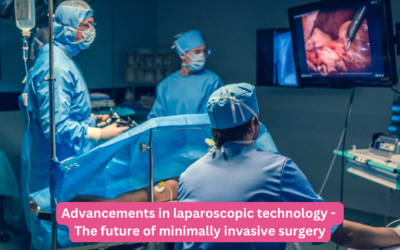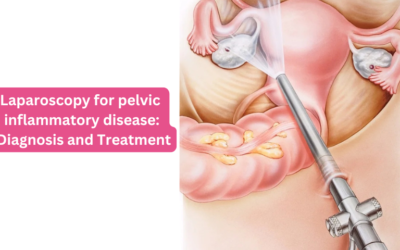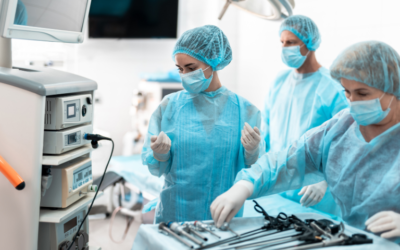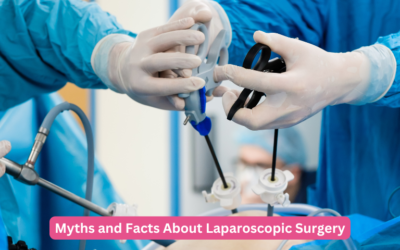In the journey toward a successful in vitro fertilization (IVF) outcome, every step is crucial in ensuring the best possible results. One of the essential procedures that significantly enhances IVF success is hysteroscopy. This minimally invasive technique is pivotal in preparing the uterus for IVF and optimizing overall fertility treatment results. Here’s a comprehensive look at how hysteroscopy integrates with IVF, and why it is a key component of the fertility process.
What is Hysteroscopy?
Hysteroscopy is a minimally invasive procedure that allows doctors to examine the interior of the uterus. Using a thin, flexible instrument called a hysteroscope, which is inserted through the vagina and cervix, the doctor can view the uterine cavity on a monitor. This procedure enables a detailed examination of the uterine lining and allows for the diagnosis and treatment of abnormalities that might affect fertility.
Why is Hysteroscopy Important in IVF?
Hysteroscopy plays a crucial role in enhancing IVF outcomes by addressing uterine abnormalities and optimizing the uterine environment. Here’s why hysteroscopy is important in the context of IVF:
- Identifying Uterine Abnormalities: Uterine abnormalities such as polyps, fibroids,septum or congenital anomalies can impede embryo implantation and contribute to miscarriage. Hysteroscopy provides a detailed view of the uterine lining, allowing for accurate diagnosis and treatment of these issues. Identifying and addressing these abnormalities beforehand ensures a more favourable environment for embryo implantation.
- Optimizing Uterine Environment: A healthy uterine lining is essential for successful embryo implantation. Hysteroscopy helps assess the condition of the uterine lining and makes any necessary corrections. By creating a more receptive uterine environment, hysteroscopy increases the chances of successful implantation and reduces the risk of complications during pregnancy.
- Enhanced IVF Outcomes: Research shows that addressing uterine abnormalities through hysteroscopy before starting IVF can significantly improve success rates. By removing potential obstacles and optimizing the uterine environment, hysteroscopy enhances the effectiveness of IVF treatments.
The Hysteroscopy Procedure
The hysteroscopy procedure is typically performed on an outpatient basis and involves the following steps:
- Preparation: The procedure is usually done in a clinic or hospital setting. Patients may be given a mild sedative or anesthesia to ensure comfort during the procedure.
- Insertion: The hysteroscope is gently inserted through the vaginal canal and cervix into the uterus. The instrument, equipped with a camera and light source, allows the doctor to view the uterine cavity on a monitor.
- Examination and Treatment: The doctor examines the uterus for any abnormalities. If necessary, small instruments are used to remove polyps, fibroids, or other issues. The procedure is generally quick, and most patients experience minimal discomfort.
- Recovery: After the procedure, patients may experience mild cramping or spotting. Recovery is usually swift, with most individuals resuming normal activities within a day or two.
When Should You Consider Hysteroscopy?
Hysteroscopy is recommended in several scenarios, particularly when addressing issues that may affect IVF success:
- Repeated IVF Failures: If previous IVF attempts have not been successful, hysteroscopy can help identify underlying uterine issues that might be affecting implantation.
- Recurrent Miscarriages: For individuals experiencing recurrent miscarriages, hysteroscopy can diagnose and treat uterine abnormalities that may be contributing to pregnancy loss.
- Abnormal Ultrasound Findings: If an ultrasound reveals abnormalities in the uterine lining, hysteroscopy provides a detailed evaluation and potential treatment.
The Integration of Hysteroscopy and IVF
Integrating hysteroscopy with IVF represents a synergistic approach that enhances the chances of achieving a successful pregnancy. Here’s how this combination benefits the overall IVF process:
- Comprehensive Fertility Assessment: Combining hysteroscopy with IVF provides a thorough assessment of both the uterine environment and the IVF procedure. This integrated approach ensures that all potential issues are addressed, leading to a more informed and targeted treatment plan.
- Improved IVF Outcomes: Addressing uterine abnormalities through hysteroscopy before starting IVF can significantly improve success rates. By optimizing the uterine environment, hysteroscopy enhances the effectiveness of IVF treatments.
- Reduced Risk of Complications: Identifying and treating uterine abnormalities before starting IVF reduces the risk of complications during the IVF process. This proactive approach minimizes the likelihood of implantation failure or pregnancy loss, leading to a smoother and more successful IVF experience.
- Personalized Treatment Plans: Integrating hysteroscopy with IVF allows for a personalized treatment approach. By tailoring the IVF process to address specific uterine issues identified during hysteroscopy, fertility specialists can create a customized plan that maximizes the chances of success.
Conclusion
Hysteroscopy plays a vital role in enhancing IVF success by ensuring that the uterine environment is optimal for embryo implantation. By identifying and addressing any abnormalities before starting IVF, hysteroscopy paves the way for a more successful and smoother fertility treatment process. At Shukan Hospital and IVF Centre, we integrate hysteroscopy into our comprehensive fertility care to improve outcomes and support your journey to parenthood.
Contact Shukan Hospital and IVF Centre today to explore how hysteroscopy can be integrated into your treatment plan. Our experienced team is here to support you every step of the way and help you achieve your dream of parenthood.
Author Bio
Dr. Prakash Patel
He is a highly respected Infertility and IVF Specialist with an extensive medical career spanning over two decades. As the Director of Shukan Hospital & IVF Centre, he has dedicated his life to helping couples achieve their dreams of parenthood. He is renowned for his expertise in advanced laparoscopic surgeries and has successfully managed numerous complex cases involving recurrent miscarriages and recurrent IVF failures. His proficiency in high-risk pregnancy management and advanced IVF treatments makes him a trusted name in the field of reproductive medicine.
His approach to patient care is deeply compassionate, combining his vast clinical knowledge with a commitment to personalized treatment. He holds prestigious certifications from leading medical institutions in France and Croatia, reflecting his dedication to staying at the forefront of medical advancements. With memberships in notable organizations like FOGSI and ISAR, He is recognized both nationally and internationally for his contributions to gynecology and reproductive health.
Under his leadership, Shukan Hospital & IVF Centre has become one of the premier fertility centers in Gujarat, known for its state-of-the-art facilities and patient-centered care. His outstanding work has earned him several accolades, including the My FM Achiever Award, further cementing his reputation as a leading specialist in his field.
FAqs
How long does a hysteroscopy procedure typically take?
The procedure usually takes between 15 to 40 minutes, depending on whether any treatment is required during the examination.
What are the potential risks or complications associated with hysteroscopy?
Potential risks include infection, bleeding, or perforation of the uterus, although these complications are rare. Your doctor will discuss these risks with you before the procedure.
Can hysteroscopy be performed during menstruation?
It is generally preferred to schedule hysteroscopy at a time when you are not menstruating to ensure a clearer view of the uterine lining. Your doctor will provide guidance on the best timing.
Will I need to undergo any additional tests before hysteroscopy?
Your doctor may recommend additional tests such as blood work or imaging studies to assess your overall health and the condition of your uterus before performing hysteroscopy.
What should I expect in terms of recovery after hysteroscopy?
Recovery is usually quick, but you might experience mild cramping or spotting. Most patients can resume normal activities within a day or two, though it’s important to follow your doctor’s specific aftercare instructions.
Are there any specific lifestyle changes recommended after hysteroscopy?
It’s generally advised to avoid strenuous activities and sexual intercourse for a short period after the procedure. Your doctor will provide detailed post-procedure care instructions.
Can hysteroscopy be combined with other diagnostic procedures?
Yes, hysteroscopy can be combined with other diagnostic procedures, such as saline infusion sonography (SIS), to provide a comprehensive assessment of the uterine cavity.
What should I do if I experience unusual symptoms after a hysteroscopy?
If you experience severe pain, heavy bleeding, fever, or any other unusual symptoms after the procedure, contact your healthcare provider immediately for evaluation and guidance.
Blogs related to Laparoscopy
Advancements in laparoscopic technology – The future of minimally invasive surgery
At the intersection of innovation and medicine, laparoscopic surgery has evolved from a promising technique into the gold standard of minimally...
Laparoscopy for pelvic inflammatory disease: Diagnosis and Treatment
Pelvic Inflammatory Disease (PID) is a serious infection of the female reproductive organs, including the uterus, fallopian tubes, and ovaries. Left...
The role of hysteroscopy in diagnosing and treating uterine abnormalities
At Shukan Hospital and IVF Centre, we are committed to providing comprehensive care for women’s reproductive health. One of the essential tools in...
The Wonder of Laparoscopy Surgery and its Benefits
Laparoscopy surgery, also known as minimally invasive surgery, has significantly transformed the landscape of modern medicine, particularly in the...
Preparing for Laparoscopic Surgery: Tips and Guidelines
Preparing for laparoscopic surgery involves several important steps to ensure a smooth and successful procedure. At Shukan Hospital and IVF Center,...
Myths and Facts About Laparoscopic Surgery
Laparoscopic surgery has become a popular choice for many types of operations due to its minimally invasive nature. However, several myths still...







